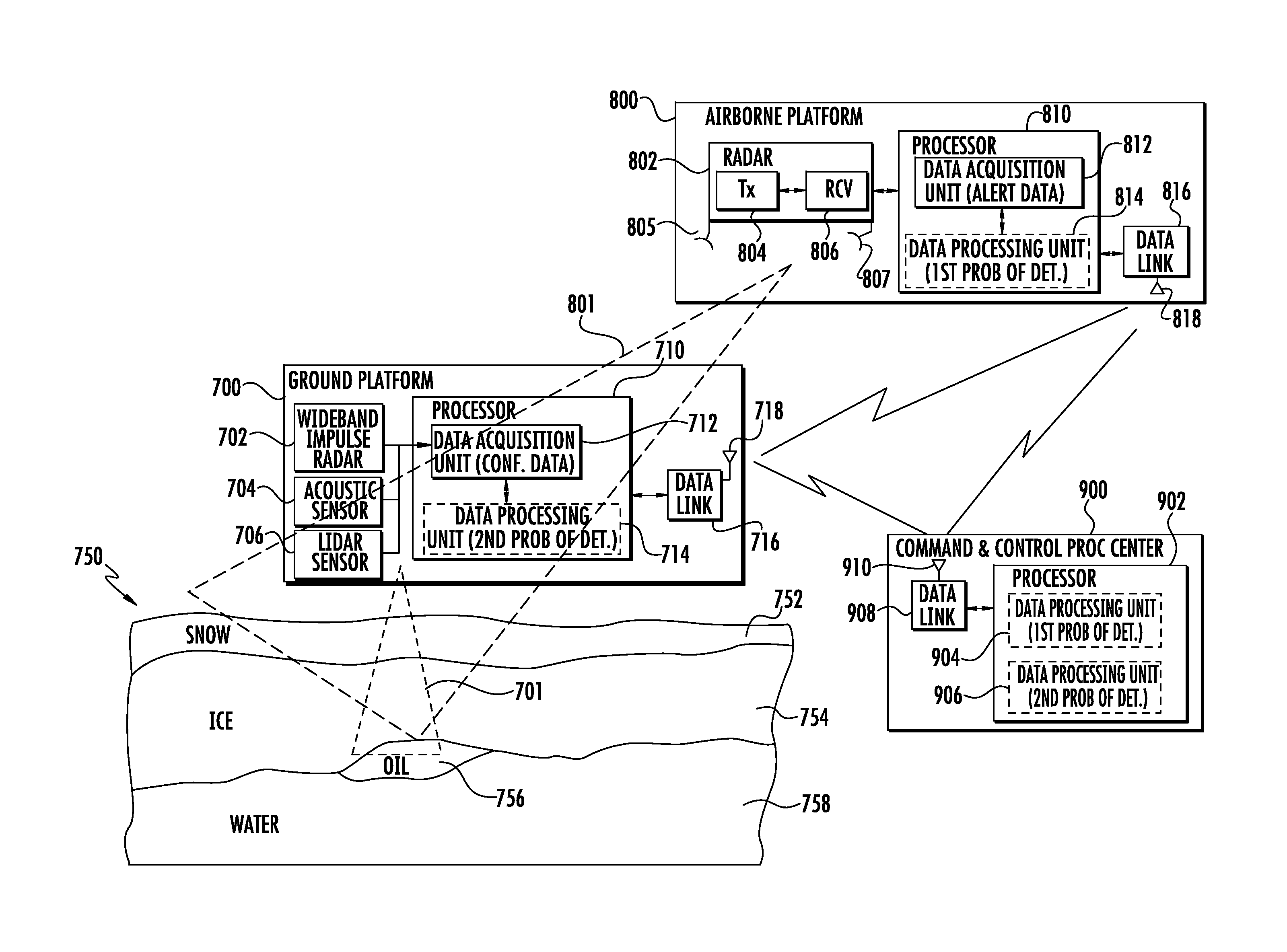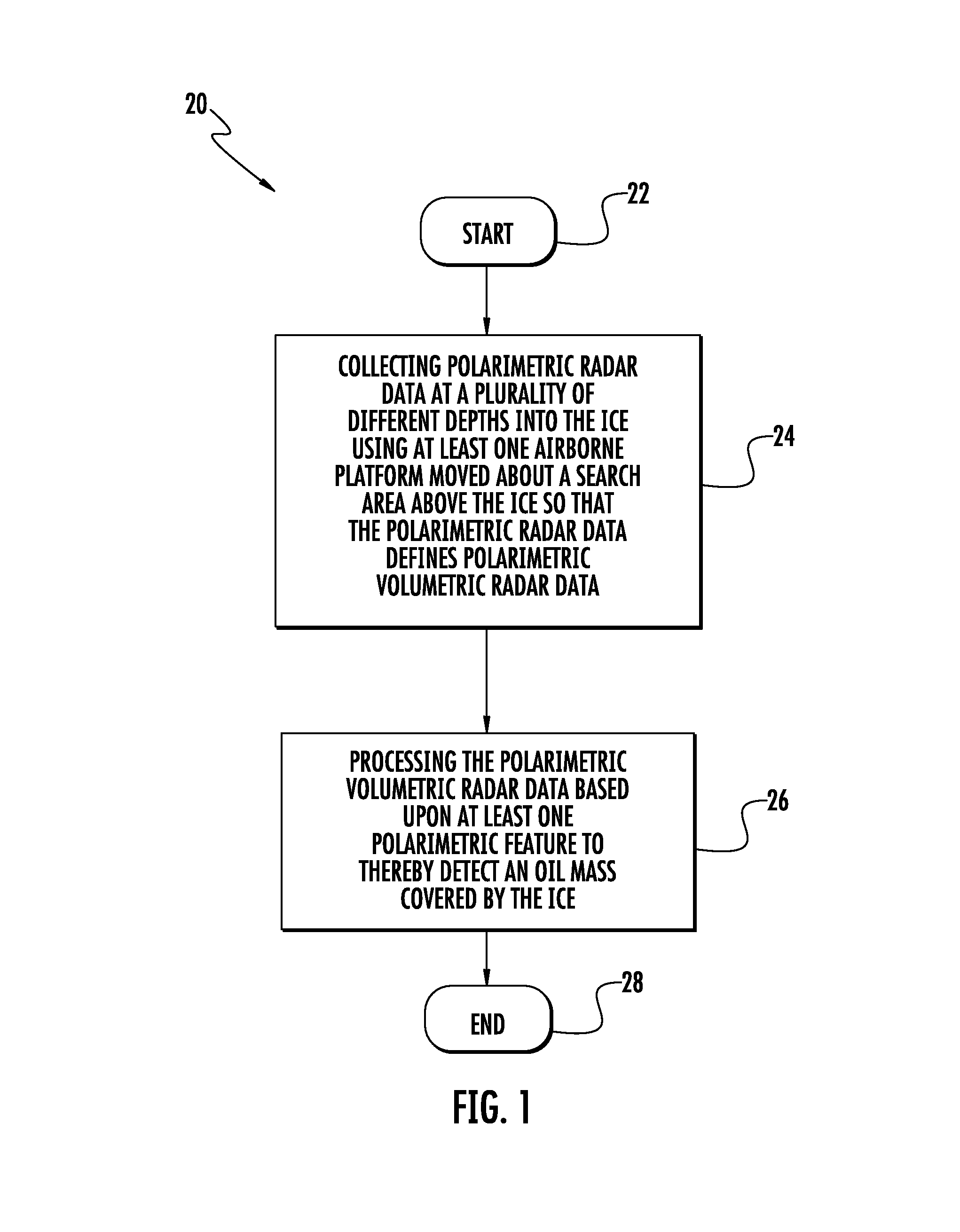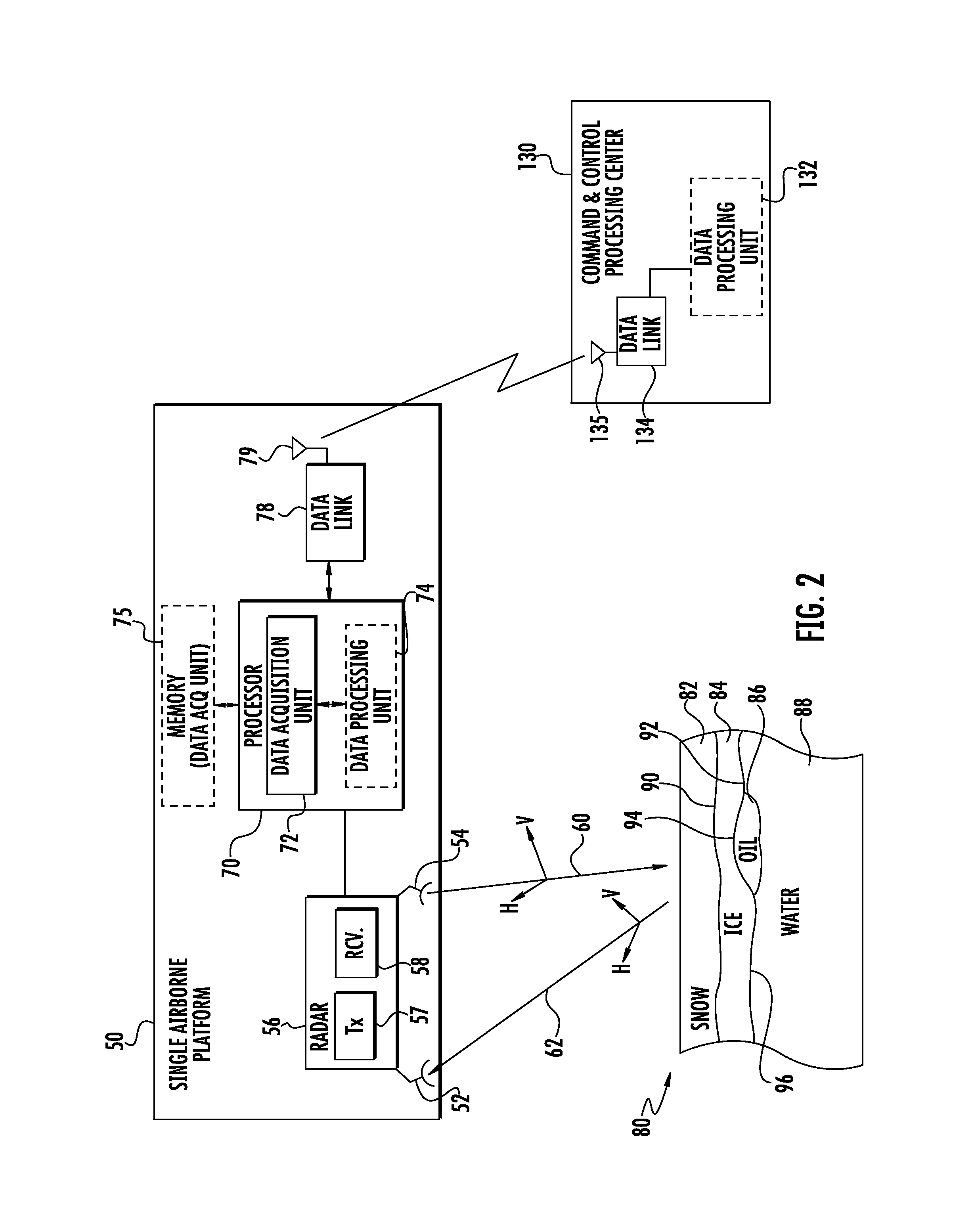Method and system using radiometric volumetric data for detecting oil covered by ice
a radiometric volumetric data and oil mass technology, applied in the field of oil resources, can solve the problems of difficult or impossible detection of oil slicks, complicated oil slick detection with airborne or satellite sensors of sar/slar, and insufficient energy level, and achieve accurate processing of radiometric volumetric data.
- Summary
- Abstract
- Description
- Claims
- Application Information
AI Technical Summary
Benefits of technology
Problems solved by technology
Method used
Image
Examples
Embodiment Construction
[0036]The present invention will now be described more fully hereinafter with reference to the accompanying drawings, in which preferred embodiments of the invention are shown. This invention may, however, be embodied in many different forms and should not be construed as limited to the embodiments set forth herein. Rather, these embodiments are provided so that this disclosure will be thorough and complete, and will fully convey the scope of the invention to those skilled in the art. Like numbers refer to like elements throughout, and prime notation is used to indicated similar elements in alternative embodiments.
[0037]In Arctic regions, for example, a thickness of ice may vary from a few centimeters to 5 meters. The area to be searched when looking for a leaked oil mass is typically within a predetermined area associated with an oil extraction site or an oil pipeline site. The oil extraction site may be an oil platform within the Arctic waters, and the oil pipeline site may extend...
PUM
 Login to View More
Login to View More Abstract
Description
Claims
Application Information
 Login to View More
Login to View More - R&D
- Intellectual Property
- Life Sciences
- Materials
- Tech Scout
- Unparalleled Data Quality
- Higher Quality Content
- 60% Fewer Hallucinations
Browse by: Latest US Patents, China's latest patents, Technical Efficacy Thesaurus, Application Domain, Technology Topic, Popular Technical Reports.
© 2025 PatSnap. All rights reserved.Legal|Privacy policy|Modern Slavery Act Transparency Statement|Sitemap|About US| Contact US: help@patsnap.com



